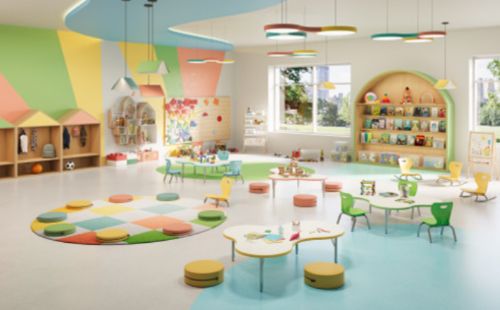

Art classrooms are places where imagination flows, but they can also become untidy quickly. Paint splatters, paper scraps, and clay tools create both excitement and disorder. Teachers need furniture that helps students work freely while keeping the space manageable.
That’s why schools look for classroom furniture for sale that matches the demands of art instruction. Flexible furniture encourages expression, supports structure, and keeps mess under control. With the right setups, creativity and cleanliness can exist side by side.
Allow Easy Reconfiguration
Art projects change pace fast. One lesson may begin with sketching and end with group projects. Heavy or fixed desks limit these shifts and add unnecessary clutter. Mobile tables, modular desks, and lightweight chairs make changes seamless. Teachers can rearrange layouts in minutes without interrupting the lesson. This flexibility reduces accidents since students move around with less crowding.
Choose Surfaces That Resist Mess
Standard desks absorb paint and glue, and this leaves them permanently stained. Over time, this makes the classroom appear neglected and unprofessional. Teachers spend extra time trying to cover up or clean surfaces.
Furniture with epoxy, powder-coated, or laminate tops is designed for art spaces. These surfaces resist scratches, moisture, and chemicals. A quick wipe restores the furniture, keeping classrooms neat and extending the lifespan of each piece.
Storage Builds Order
Art supplies pile up quickly when not organized. Brushes, paints, paper rolls, and sculpting tools left out can turn a classroom into chaos. Disorganized spaces also waste time as students search for what they need.
Storage solutions like mobile carts, clear bins, and built-in cabinets create order. Students know where supplies belong, which reduces clutter. Teachers can start projects faster because tools and materials remain within reach. Organized storage is a key step toward keeping creativity mess-free.
Adapt for Group Work and Solo Tasks
Art teachers balance both collaborative and individual learning. A rigid classroom design makes these transitions difficult. Students need freedom to work alone at times and in teams at others.
Desks that connect or separate adapt to each type of activity. Adjustable tables and modular layouts help educators support different teaching styles. With this versatility, classrooms remain organized even as projects shift, keeping both teamwork and solo work smooth and mess-free.
Support Mobility and Safety
Safety is as important as cleanliness. Weak desks, unsteady stools, or sharp corners raise the chance of accidents. In busy art spaces, this risk increases with messy materials on the floor.
Strong frames, rounded edges, and non-slip features reduce hazards. Lockable wheels on mobile furniture ensure stability once the layout is set. By choosing furniture built with safety in mind, schools protect students while still encouraging exploration in art.
Investment in Durable Art Classroom Furniture
School budgets are stretched, so furniture must be chosen wisely. Poor-quality designs wear out fast, forcing replacements that raise long-term costs. Durable art furniture reduces this burden.
When schools search for classroom furniture for sale, they must consider strength, resilience, and ease of care. Well-made pieces resist stains, survive daily rearrangements, and clean with little effort. Strong investments like these keep classrooms looking professional and functional across many school years.
Art classrooms thrive on creativity, but without the right furniture, they can quickly fall into disorder. Schools that prioritize durable and adaptable furniture make wise investments. These choices reduce mess, lower costs, and enhance the classroom experience. In the end, well-selected furniture helps art programs flourish, giving students the freedom to create without the stress of constant cleanup.


